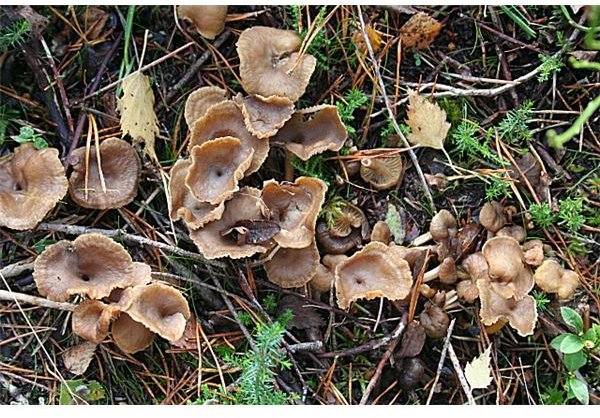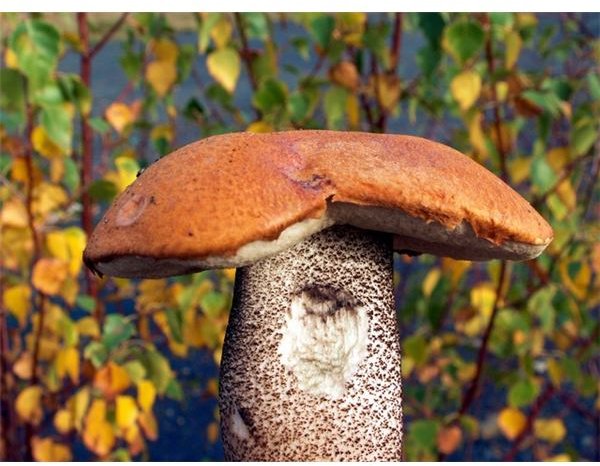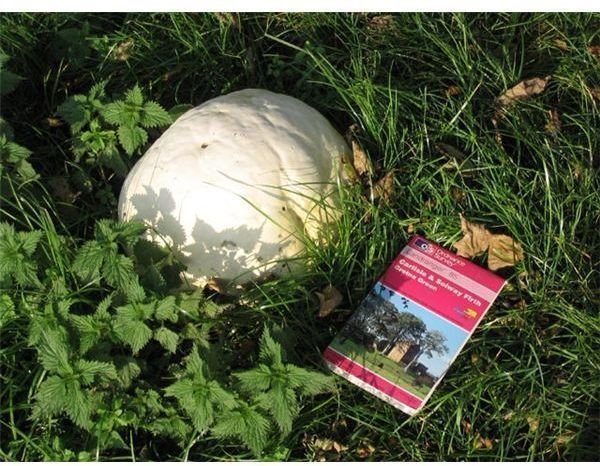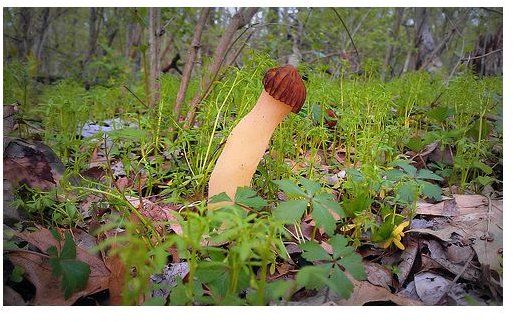How to Identify and Prepare Edible Wild Mushrooms
Morels
Morels (scientific name: Morchella spp.), the most common variety of wild mushrooms, resemble the shape of sponge, pinecone or honeycomb, and may grow to 12 inches tall. As a definite identifier, look for pits and ridges in the surface, and whether the bottom edge of the cap attaches to the stem directly. Morals appear almost everywhere, but are most abundant in moist woodlands and river bottoms.
The three common species of morels are:
- Common morel (scientific name: Morchella esculenta) which spots white ridges and dark brown pits when young, yellowish ridges and yellowish brown pits when old.
- Black or smoky morel (scientific name: Morchella elata) with gray or tan ridges
- Half-free morel (scientific name: Morchella semilibera), which unlike common morels has a small cap that attaches about the middle of the long bulbous stems.
Bread, fry, stew or bake morels, either creamed or stuffed with dressing. One recommended preparation: Sauté in butter for about five minutes on each side. A word of caution: Morels may cause mild poisoning symptoms when consumed with alcohol.
Chanterelles

Chanterelles (scientific name: Cantharellaceae) grow up to six inches tall and wide, and have wavy cap edges and a stem that resemble a funnel or trumpet. The underneath of the cap may be smooth, spot wrinkles or have gill-like ridges running to the stem. Most chanterelles are bright orange or yellow, and a few have brownish-black black trumpet.
Do not confuse chanterelles spotting gill-like ridges in the underneath with poisonous jack-o-lantern mushrooms. Chanterelles grow on ground, while jack-o-lantern grows in tight clusters in wood or buried wood.
Chanterelles are tough and require long, slow cooking. The best way to cook is to sauté slowly in butter until tender. Once done, season with salt, pepper and parsley and serve on crackers. The taste makes it worth the effort.
Boletes

Boletes are sturdy and fleshy mushrooms with a spongy layer of spores underneath, closely resembling grilled burgers. The caps, which may grow up to 10 inches tall are usually brownish or reddish-brown, and the pores white, yellow, orange, red, olive or brown. There are more than 200 species of boletes in North America, with the King Bolete (scientific name: Boletus edulis) the best edible. Avoid boletes with orange or red pores, as they could be poisonous.
Boletes decay quickly and as such collect and eat only fresh specimens. If the cap is slimy, peel off the slime layer, for it may cause diarrhea. Similarly, remove tough stems, and peel off the pore layer in all but the youngest specimens. The best way to enjoy this delicacy is by sautéing in butter and adding it to any cheese dish.
Puffballs

Puffballs (scientific name: Lycoperdon spp. and Calcatia spp) are round or pear-shaped, with white, tan, or gray color. It may or may not have a stalk-like base. Puffballs measure one to above 12 inches in diameter, and depending on their size, may be mistaken at a distance for everything from golf balls to sheep. Puffballs abound in late summer and fall, in lawns, open woods, pastures and barren areas, on soil or decaying wood.
On plucking, slice the mushroom and examine the interior. The presence of dark, powdery spores indicates a very old mushroom. Use only pure white mushrooms without any features. Even small traces of yellow or brown spoils the taste. The color or spots inside may also be Amanitas, a poisonous breed.
At times puffballs may have a tough outer skin. Remove the same before cooking, slice the mushrooms, dip in batter and fry.
Other Common Types
Besides these common varieties, there are hundreds of other edible varieties, coming in different shapes and sizes. Some of them are:
- Shaggy Mane (scientific name: coprinus comatus), a large, distinctive, yet delicate mushroom with a large cap, long white cylinder, and shaggy, upturned, or brownish scales. Best eaten when sautéed with butter and seasoned with nutmeg or garlic, to accompany scrambled eggs or chicken dishes.
- Coral Fungi or club fungi (scientific name: Clavariaceae), appearing as clumps of branching stems pointing upward, and bearing striking similarity to corals. These mushrooms spot a whitish, yellowish, pinkish or purple tan, and may grow up to eight inches high. For best preparation, sauté and add vegetables or white sauce. Avoid the ones that taste bitter, or turn brown when handled
- Sulfur Shelf or Chicken Mushrooms (scientific name: Laetiporus sulphureus) have orange-red caps and tiny pale sulfur-yellow pore surfaces, and always grow on wood, usually in large masses of overlapping caps. It has no stem, with the cap attaching directly to wood. Cook only the tender outer edges of the caps, for the rest is tough and woody. Slice and simmer for 45 minutes, and serve creamed on toast. When cooked, this mushroom has the texture and often the taste of chicken, giving it the name chicken mushrooms.
- Bearded Tooth (scientific name: Hericium erinaceus) has clumps of hanging white “fur,” resembling a polar bear’s paw, and may grow to a foot wide. Consume only the pure white ones. Slice, parboil until tender, drain and serve with cheese sauce.
- Oyster Mushrooms (Pleurotus ostreatus) are large white, tan or ivory-colored, with white gills running down a very short stem placed off the center. As the name suggests, these mushrooms resemble oyster shells, and measures two to eight inches wide. For best results, dip in beaten egg, or roll in cracker crumbs and fry.
General Tips
When mushroom hunting, separate fact from fiction, and rely only on authentic scientific and verifiable information to determine if a mushroom is safe to eat. For instance, an old wives take abound that any mushrooms with pink stems are edible, when it is actually not the case. Consult a good field guide with color photos, for specific identifying features. The National Audubon Society’s Field Guide to North American Mushrooms is a good pocketbook to take along on field trips. Another good option is David W. Fischer and Alan E. Bessette’s “Edible Wild Mushrooms of North America: A Field-to-kitchen Guide” (ISBN 978-0-292-72080-0)
Never go by the appearance alone when selecting wild mushrooms. Some edible species and poisonous species share the same characteristics and appearance, and only an examination of the interior and understanding where the mushroom grows allows for a definite identification. Therefore, cut the mushrooms off close to the ground, but do not uproot them. Make a note of the location, such as a dead log, under an oak tree, on plain ground, or anywhere else. Leave old, bug-infested and very small mushrooms behind.
Never eat wild mushrooms raw. Some species are not considered poisonous nevertheless contain toxins, which are destroyed by heat. Before cooking, always cut the mushrooms lengthwise to view the inner structure, and carefully examine the mushrooms under bright light. Do not consume mushrooms that change color when cut, seeps liquid from the cut surface, of if infected by insects.
Before storing or preparing wild mushrooms, trim away any damaged areas, wipe away soil and soak for a few hours in salt water to cause any insects hidden between gills and in crevices to come out. Rinse thoroughly before using. Wild mushroom have a shelf life of a few days under refrigeration. For long-term storage, boil the mushrooms for few minutes, allow to cool, drain completely and freeze in a single layer on a cookie sheet for a few hours. Alternatively, dry the mushrooms in a food dehydrator or oven set to 100F to 150F. Dehydrate thoroughly until the mushrooms resemble potato chips. Slice mushrooms to about 1/4 inch thick before drying, and dehydrate thoroughly. Reconstitute by soaking in warm water before using
An old saying goes, “There are old mushroom hunters and bold mushroom hunters but there are no old, bold mushroom hunters”. As a rule of thumb, when in doubt, avoid. Consume only those mushrooms whose identity is beyond doubt. Poisonous mushrooms may cause diarrhea, vomiting, stomach cramps or serious illness. A few deadly species may even cause death.
References
-
Image Credit
- Morel Mushroom: flickr.com/johhyalive
- Chaneterelles: geograph.org.uk/Anne Burgess
- Orange Birch Bolete: geograph.org.uk/John Fielding
- Puffball: geograph.org.uk/Walter Baxtr
-
Missouri Department of Conservation. “Edible Mushrooms.” Retrieved from http://mdc.mo.gov/discover-nature/outdoor-recreation/how/mushrooms/edible-mushrooms on August 10, 2011.
-
“The Wild Edible Mushrooms.” http://www.botany.hawaii.edu/faculty/wong/bot135/lect17a.htm. Retrieved August 10, 2011.
-
Deland, Peggy. “Gathering Wild Mushrooms.” Retrieved from http://www.lifeunplugged.net/gardenpantry/gathering-wild-mushrooms.aspx on August 10, 2011.
